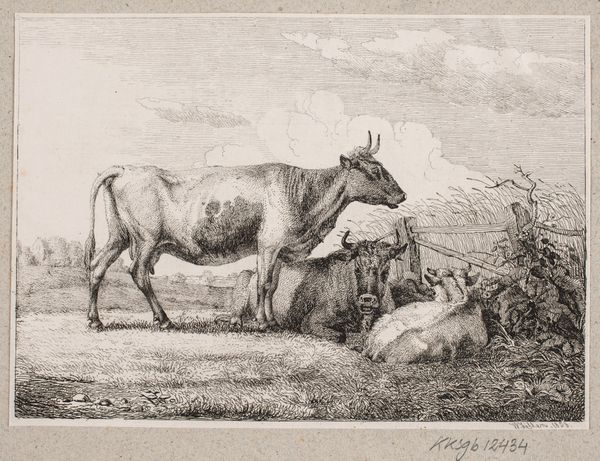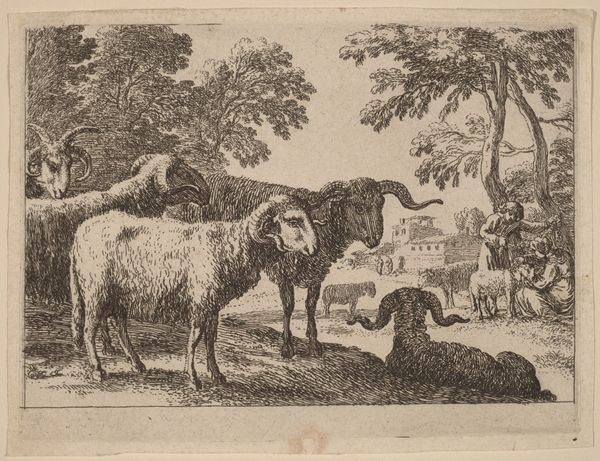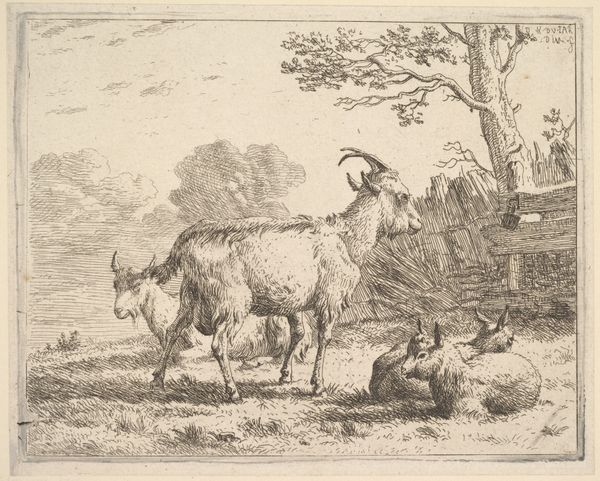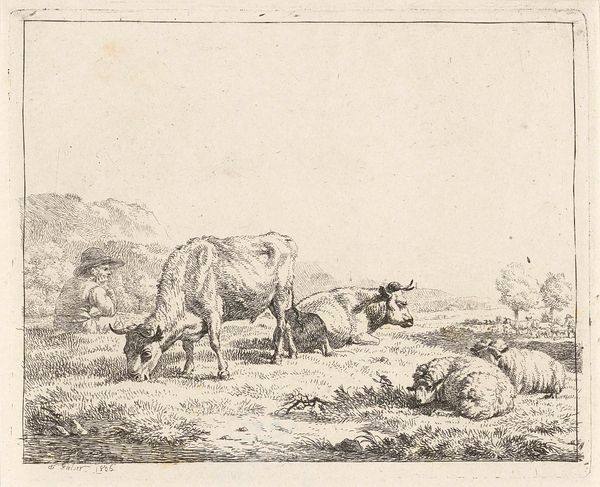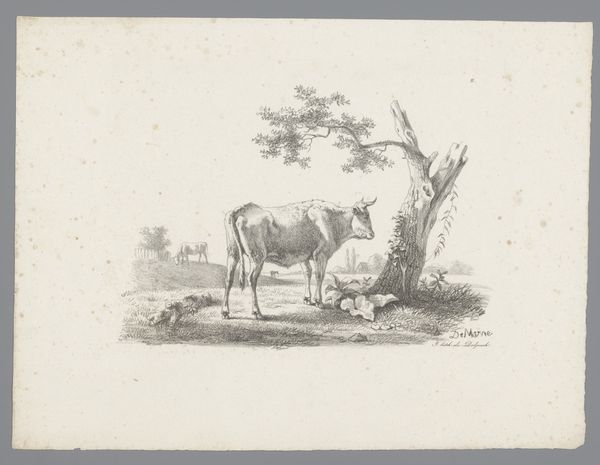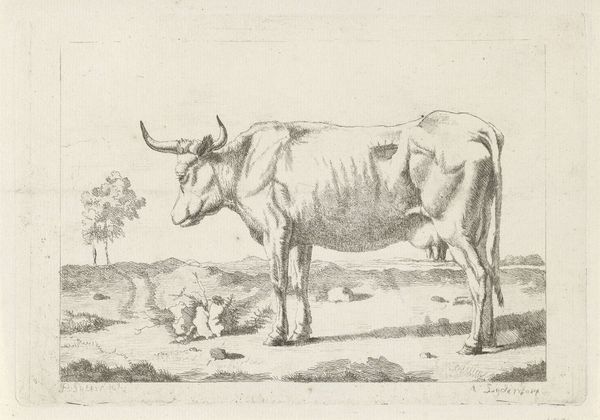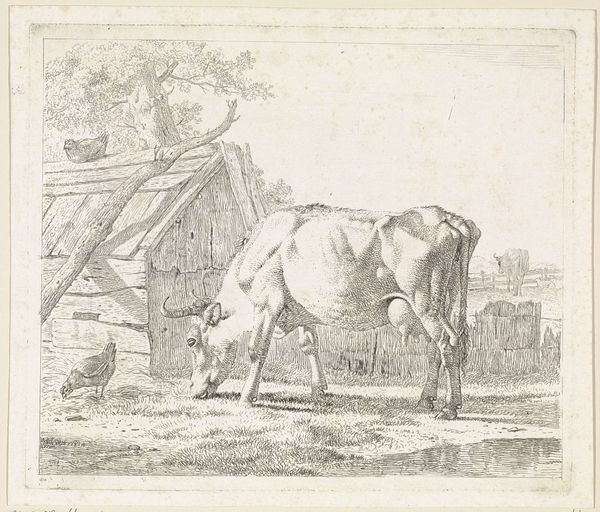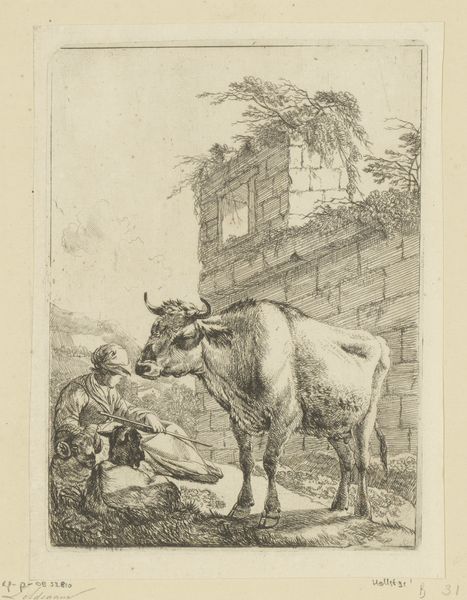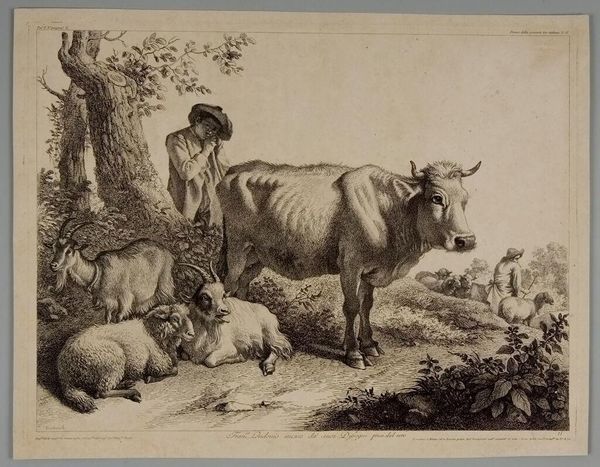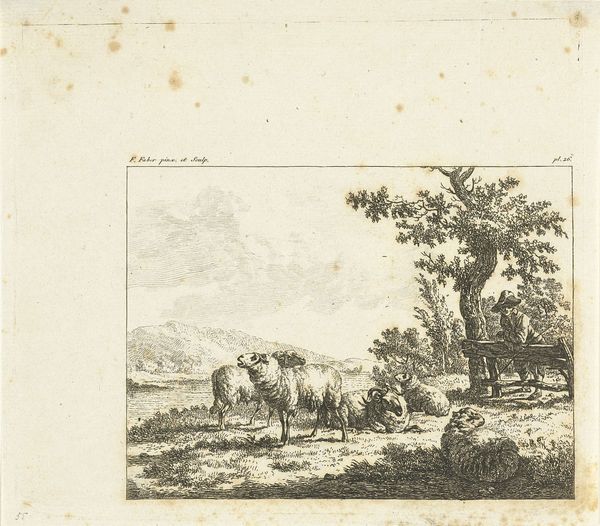
drawing, print, etching
#
drawing
#
baroque
#
animal
# print
#
etching
#
landscape
#
figuration
#
genre-painting
Dimensions: height 123 mm, width 153 mm
Copyright: Rijks Museum: Open Domain
Curator: Before us is "Goats with Two Lambs," an etching and print by Karel du Jardin, likely created sometime between 1636 and 1678. What is your immediate response? Editor: There is a profound sense of calm; the figures seem content and there is nothing really dramatic occurring. I do however wonder about that ramshackle fence on the right of the frame and what barriers or exclusions this might denote. Curator: Interesting! From my perspective, I see how du Jardin uses these animals to depict an enduring pastoral harmony. Notice how he uses etching to mimic the effect of a detailed drawing. These domestic animals in such a setting have symbolic weight. Think of the goat—often linked to both fecundity and, contradictorily, sin, its presence in art has roots reaching far back into ancient mythology and folklore. Editor: Yes, the duality there cannot be overlooked. Though ostensibly serene, might there also be underlying themes about labor, ownership, or perhaps the vulnerability of the pastoral ideal to encroaching social or political changes? The reality of pastoral life at the time, even if romanticized, was never without hardship and inequities. The composition and subject can obscure it or give a counter narrative, as you point out. Curator: And what of the maternal goat as a visual symbol? Here we might consider the ancient association between goats, nurture, and the embodiment of feminine resilience across various traditions and periods in Europe. Editor: This interpretation has merit but seems rather sanitized, frankly. I question whose narratives of that period get to endure, as told through artworks like this, and whose perspectives were actively marginalized? To me this questions issues such as gender bias and class hierarchy implicit even in scenes portraying seeming simplicity. Curator: Those are valuable questions to consider and help us deepen our understanding. This seemingly simple portrayal provides access to an array of potential significations regarding societal structure. Editor: Ultimately, this is just another artwork, from a historical era rife with complexities, that reminds us to never take appearances for granted, even within depictions of what we think of as tranquility and a certain natural order. Curator: A nuanced observation that pushes us beyond surface level reading! It underscores how we inevitably weave our modern viewpoints in the understanding of these historical works.
Comments
No comments
Be the first to comment and join the conversation on the ultimate creative platform.

